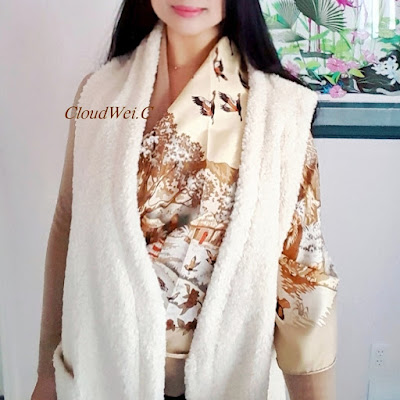The Chinese New Year falls on Feb 01, 2022, this is the Year of the Tiger. The Tiger is the third among the 12 animals of the Chinese zodiac. They are characterized by independence, fearlessness, competitiveness and unpredictability, high-self esteem and loyal.
If you are interested in the background stories and in-depth articles about Mr. Robert Dallet’s artwork designed for the French luxury brand Hermès, please click the following articles:
Hermès Scarf Acinonyx Jubatus ,
Hermès Scarf Les Quatre Saisons ,
Hermès Scarf Halte en Camargue ,
and the Style Lookbook 1, Style Lookbook 2
A comparison of the Hermes Regular Silk and Wash Silk Twill Part 1
A comparison of the Hermes Regular Silk and Wash Silk Twill Part 2
Wishing you all a happy, healthy and successful new year!
Year of Issue: 1988
Hermès Scarf Sichuan
Year of Issue: 1995
Necklace: Cartier Diamants Légers necklace
Year of Issue: 1997
Hermès Scarf Tanzenie
Year of Issue: 1997
Hermès Scarf La Treve de I’Eau
Year of Issue: 2005
Necklace: Cartier Diamants Love necklace
Hermès Scarf Tendresse Feline
Year of Issue: 2012













Comments
Post a Comment